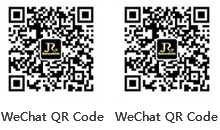Unlocking Precision: The Role of Vitrified Bond Diamond Wheels for PCD and PCBN
Vitrified bond diamond wheels are essential tools in the grinding process of Polycrystalline Diamond (PCD) and Polycrystalline Cubic Boron Nitride (PCBN) materials. These advanced grinding wheels are designed to provide efficient and precise machining, making them indispensable in industries that require high-performance tools. The vitrified bond structure, which refers to the glass-like bond that holds the diamond particles, offers several advantages that enhance the grinding process.
Firstly, one of the primary benefits of vitrified bond diamond wheels is their excellent thermal stability. This stability allows for higher grinding speeds while maintaining the integrity of both the wheel and the workpiece. When working with challenging materials like PCD and PCBN, which are known for their hardness, the ability to dissipate heat effectively is crucial to prevent damage or degradation of both the wheel and the substrate being machined.
Moreover, vitrified bond diamond wheels exhibit superior wear resistance compared to other bond types. This longevity translates into fewer wheel changes and reduced downtime, which is particularly advantageous in high-volume production environments. With a consistent grinding performance, operators can achieve tighter tolerances and superior surface finishes, essential in applications such as aerospace, automotive, and medical device manufacturing.
Additionally, the porosity of vitrified bonds allows for effective chip removal, creating an efficient grinding operation. This feature minimizes the risk of wheel loading, which can hinder performance and result in poor machining outcomes. By maintaining a clean cutting surface, these wheels ensure that the grinding process remains efficient and effective.
The versatility of vitrified bond diamond wheels extends to various grinding operations, including flat grinding, cylindrical grinding, and tool sharpening. Their compatibility with CNC machines makes them suitable for automated applications, enhancing productivity and precision in manufacturing processes.
When selecting vitrified bond diamond wheels for PCD and PCBN applications, it's essential to consider factors such as grit size, wheel diameter, and bond strength. These parameters can significantly influence the grinding performance and the desired finish of the workpiece. Consulting with experts in the field can help determine the most suitable specifications for your specific application needs.
In conclusion, vitrified bond diamond wheels are a prime choice for grinding PCD and PCBN materials due to their thermal stability, wear resistance, and efficiency in chip removal. By understanding their properties and applications, manufacturers can optimize their grinding processes, leading to improved product quality and operational efficiency. Investing in the right grinding wheels not only enhances the machining experience but also contributes to overall production success.
Firstly, one of the primary benefits of vitrified bond diamond wheels is their excellent thermal stability. This stability allows for higher grinding speeds while maintaining the integrity of both the wheel and the workpiece. When working with challenging materials like PCD and PCBN, which are known for their hardness, the ability to dissipate heat effectively is crucial to prevent damage or degradation of both the wheel and the substrate being machined.
Moreover, vitrified bond diamond wheels exhibit superior wear resistance compared to other bond types. This longevity translates into fewer wheel changes and reduced downtime, which is particularly advantageous in high-volume production environments. With a consistent grinding performance, operators can achieve tighter tolerances and superior surface finishes, essential in applications such as aerospace, automotive, and medical device manufacturing.
Additionally, the porosity of vitrified bonds allows for effective chip removal, creating an efficient grinding operation. This feature minimizes the risk of wheel loading, which can hinder performance and result in poor machining outcomes. By maintaining a clean cutting surface, these wheels ensure that the grinding process remains efficient and effective.
The versatility of vitrified bond diamond wheels extends to various grinding operations, including flat grinding, cylindrical grinding, and tool sharpening. Their compatibility with CNC machines makes them suitable for automated applications, enhancing productivity and precision in manufacturing processes.
When selecting vitrified bond diamond wheels for PCD and PCBN applications, it's essential to consider factors such as grit size, wheel diameter, and bond strength. These parameters can significantly influence the grinding performance and the desired finish of the workpiece. Consulting with experts in the field can help determine the most suitable specifications for your specific application needs.
In conclusion, vitrified bond diamond wheels are a prime choice for grinding PCD and PCBN materials due to their thermal stability, wear resistance, and efficiency in chip removal. By understanding their properties and applications, manufacturers can optimize their grinding processes, leading to improved product quality and operational efficiency. Investing in the right grinding wheels not only enhances the machining experience but also contributes to overall production success.
key word:
Vitrified bond diamond wheels for PCD and PCBN
Online Message




